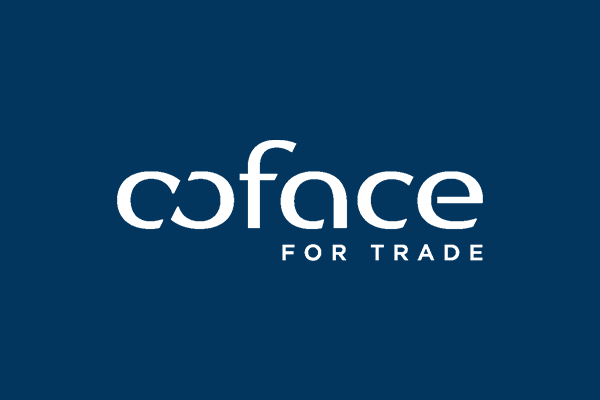Coface has upgraded the UK from A4 to A3 in our risk assessments, the same as Ireland, France, and Germany. This comes as the global economy navigates the impact of new Trump tariffs and other shifting trade dynamics. But while Britain is in the middle of a tentative recovery, other global economies are already feeling the disruptive impact of the new occupant in the White House.
Headlines
- Coface forecasts UK growth of 1.4% in 2025 (revised up from 1.1%) and we upgraded our country risk rating to A3 (satisfactory). In post-election Ireland, the risk assessment remains A3 despite a sharp rise in SME insolvencies.
- Global growth forecast for 2025 revised slightly upwards to 2.7% (from 2.6%) because of the resilience of the US economy.
- Four country upgrades: The UK (A3), Guyana (B), Luxembourg (A1) and Oman (B). Three downgrades: Bangladesh (D), Botswana (B), and Maldives (D).
- Eight sector upgrades, including UK paper and transport, pharmaceuticals in the UAE and Saudi Arabia, retail in Japan, and energy in Argentina. 12 downgrades, two-thirds of which in the European automotive sector, alongside metals in France, Germany, and Italy.
What’s the outlook for the global economy now that the US has a different administration and Trump tariffs are in place?
The outcome of the US Presidential election in November meant that 2025 was always going to be a bumpy ride and sure enough, 2025 started with a jolt when Trump announced new tariffs on China, Canada and Mexico, with the EU next in his sights.
The US economy is currently strong enough to withstand the inflationary impact of tariffs and we expect growth of 2.2%. This resilience is the main reason we’ve revised up our global forecast to 2.7%.
By contrast, the main European countries are already exhausted from several years of economic and social upheaval with limited immediate prospects for improvement. We expect weak growth in the key economies of Germany, Italy, France where confidence is low and labour markets are at risk from manufacturing closures, despite falling interest rates. With weak domestic consumption, the imposition of Trump tariffs would hit manufacturers hard, especially in the struggling European automotive industry which is why we’ve made so many downgrades in this sector (eight automotive sector downgrades, all in Europe).
A trade war with the US also has serious implications for manufacturers in China, and it’s widely expected that budget stimulus measures will be introduced to revive the economy. However, private sector credit is weak, and the property market looks to be losing steam. We’re forecasting growth of 4.3% this year.
You’ve upgraded the UK to A3 – what prompted you to do this now?
We’re more optimistic than the Bank of England about the prospects for growth in the UK in 2025. The UK economy is continuing the slow recovery that started last year, supported by rising household consumption and government spending.
At the same time, domestic investment in many sectors will be supported by government infrastructure spending, industrial policies and gradually falling interest rates, despite rising prices. The Bank of England has already signalled its intentions with its first quarter-point cut of the year in February.
There was also a 4.5% fall in corporate insolvencies in 2024 compared with 2023 across nearly all sectors with a significant year-on-year drop of 15% in Q4. We expect this trend to continue in 2025 although the number of company insolvencies (25,400) was still 35% higher than before the pandemic. Compulsory liquidations also continued to rise in 2024 (up 14% year-on-year).
What might still blight the UK recovery?
There are both internal and external risks. The main internal risk is the level of consumer and business confidence, which was badly dented by recent rises in government gilts - and the accompanying headlines – as well as some months of disappointing growth. Fears about the state of the economy could become a self-fulfilling prophecy if they significantly impact household consumption or companies’ expansion and investment plans.
Another blot on the horizon is the poor state of European manufacturing which still is a key market for many UK businesses and could be further challenged by Trump tariffs and rising energy prices. Trump could also impose a tariff on UK goods exports to the US which would have a negative impact. However, it would be less severe than other countries as we predominantly export services, and the trade balance is roughly neutral.
Finally, geopolitical risk is still high, despite recent improvements. If conflicts flare up, such as an escalation in the Middle East, it could have an inflationary impact on global energy prices and disrupt freight.
What about Ireland’s economic prospects – will the recent election make a difference?
The two main parties have effectively resumed their power sharing deal (with Fianna Fail the senior partner) as no party won an overall majority and Sinn Fein was unable to make its anticipated breakthrough while the greens lost all but one of their seats.
Most of the policy discussion so far has been on social matters (childcare, pension age and housing). However, Ireland’s economy is heavily dependent on US multinationals which could be a problem if President Trump goes ahead with his plan to repatriate taxes and jobs.
Over the medium term, the Irish economy has been characterised by interesting diverging trends. On the positive side, the labour market is still strong with employment rising and unemployment still relatively low, while real wages are rising too. Consumption is looking steady as well (despite a slowdown in Q3) with consumer confidence rising and retail sales, after a dip around Q3.
On the downside, GDP growth came in at only 0.3% in 2024 after falling by around 5% in 2023 after several years of strong growth.
Insolvencies rose by 32% year-on-year in 2024 and is almost 50% higher than 2019, although this is still centered around SMEs.
Overall, we’ve maintained our A3 risk assessment (satisfactory) and Ireland remains a good place to do business.
What are the biggest risks for emerging markets?
A strong dollar is more likely under President Trump’s tariff policies which is a particular risk for many emerging economies which are perceived as vulnerable, raising the prospect of capital outflows and currency depreciation.
For example, the Brazilian real shed 10% of its value between the end of November and 25 December, prompted by doubts over the sustainability of public finances. While Brazil’s central bank was able to use its foreign exchange reserves to prop up the currency, that won’t be the case elsewhere. What’s more, the subsequent imposition of higher interest rates is bound to lead to an economic slowdown and a rise in corporate insolvencies.
The countries which are most heavily indebted, or which have large external imbalances are likely to be hit hardest. It’s a long list, including Laos, Mongolia, Ecuador, Bolivia, Egypt, Tunisia and several sub-Saharan African countries.
The full Country and Sector Risk report and infographics are available on the Coface website, where regular economic publications keep exporters updated on market trends. Our business risk dashboard and URBA350 tool offers invaluable insights—helping you monitor trade credit risk across countries, sectors, and millions of companies worldwide.



